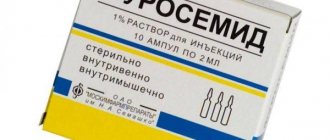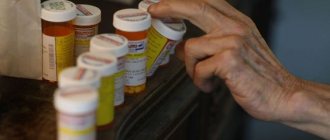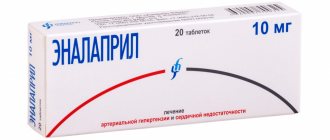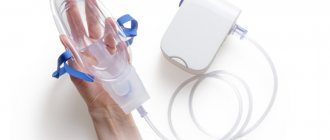One of the most popular methods of treating infertility is ovulation stimulation. It is used for women with problems with the maturation of the egg and the absence of its release from the ovary. To stimulate ovulation, hormonal drugs are used, thanks to the action of which one or more eggs capable of fertilization are formed in the female body.
Methods to restore ovulation are selected taking into account the reason for its absence. Achieving a positive effect from the use of ovulation stimulation is possible only if the cause that disrupts the ovulatory process is established.
Reasons for the development of anovulation
The reasons that provoke the development of anovulation can be physiological and pathological (chronic). Physiological anovulation is considered normal, does not require seeking medical help and can occur during the following periods in a woman’s life:
• puberty: in teenage girls, ovulation may not occur for the first two years after menarche; • period of pregnancy and breastfeeding; • menopause; • “rest” period: 1-2 menstrual cycles per year; women of reproductive age may not ovulate.
Pathological anovulation can be caused by a violation of the structure of organs or diseases of the endocrine system. Most often, the presence of this particular condition is the cause of infertility.
Pathological reasons for the lack of ovulation may be the presence of the following conditions:
• dysfunction of the hypothalamus; • oncological diseases of the pituitary gland; • circulatory disorders in the brain; • hyperprolactinemia; • hyperandrogenism; • frequent stress; • injuries of the reproductive system; • inflammatory diseases of the appendages; • obesity; • anorexia; • premature menopause; • gynecological diseases (polycystic ovary syndrome, endometriosis, uterine fibroids, etc.); • diseases of the thyroid gland and liver; • when taking hormonal contraceptives.
Interactions and side effects
No clinically significant drug interactions have been reported during treatment with Gonal-F. GnRH may interact with the drug, increasing the dose required for an adequate ovarian response. When using the drug, local reactions are very rarely possible, such as redness, irritation, soreness, swelling of soft tissues at the injection site, headaches or the development of ovarian cysts. Severe side effects, which occur less frequently than 1/10,000, include ovarian hyperstimulation syndrome, allergies or episodes of thromboembolism.
Stages of ovulation stimulation
Stimulation using clostilbelite begins on the fifth day of the menstrual cycle, with gonadotropins - on the second. The timing of the start and duration of taking the drugs is determined by the attending physician in accordance with the condition of the woman’s uterus and ovaries.
The first ultrasound examination is carried out a few days after the start of the ovulation stimulation procedure. Then ultrasound is repeated every 2-3 days until the follicles reach a size of at least 20 mm. After this, the woman is given an injection of hCG (in a dosage of 5,000 to 10,000 units), which starts the ovulation process and prevents regression of the follicles and the risk of follicular cyst formation.
An hCG injection is an injection of a hormonal drug with the main active substance - human chorionic gonadotropin: pregnyl, prophasia, choragon, humegon, menogon, choriogonin, etc. With the help of these drugs, the ovulation process is restored, as well as an increase in the level of hCG in the blood, due to which yellow body and its activity increases.
The doctor selects the dosage of the hCG drug in each individual case in accordance with hormone levels, the size of the follicles and a number of other equally important factors. Excessive amounts of human chorionic gonadotropin can trigger the development of ovarian hyperstimulation syndrome.
An injection of hCG (human chorionic gonadotropin) triggers the onset of ovulation, which usually begins 24-36 hours after the injection. The release of the egg is recorded using ultrasound, after which the woman is prescribed additional support for the ovaries (corpus luteum) in the form of injections of utrogestan or progesterone.
The timing and frequency of sexual intercourse or artificial insemination when stimulating ovulation is prescribed by the doctor individually, depending on the results of the man’s spermogram. If the quality and quantity of sperm are good, it is recommended to have sexual intercourse every day or every other day, starting from the moment the woman received the hCG injection until the corpus luteum is formed.
Recommendations for pregnant women
An injection of hCG is recommended for a pregnant woman when her body does not have enough human chorionic gonadotropin for a comfortable pregnancy and the development of a healthy fetus. Before giving instructions on the need for hormonal therapy, the doctor asks for a repeat test for hormone levels and draws conclusions based on several studies.
The hCG norm is a vague concept, so you should not be afraid of minor deviations down or up. But when your test results differ from the standards indicated in the hCG table, you need to carry out hormonal therapy and identify the reasons for the deviation from the norm.
Non-compliance with standards can be caused by various pathologies and anomalies, including:
- Ectopic pregnancy,
- Frozen pregnancy
- Problems in the formation of the placenta,
- Risk of miscarriage.
When resorting to hormonal therapy, do not forget about the possible side effects that the use of drugs can lead to. The use of human chorionic gonadotropin can be fraught with the formation of a follicular cyst and other pathologies. Preparations containing hCG are not recommended for use for the following reasons:
- During lactation,
- With early menopause,
- In case of tumors in the ovaries and pituitary gland,
- With thrombophlebitis,
- In case of obstruction of the fallopian tubes,
- If you have allergies.
If a married couple is faced with the impossibility of conceiving on their own, reproductive specialists find out what the cause of the problem is by analyzing the results of tests and examinations that both partners undergo. If a deficiency of human chorionic gonadotropin is confirmed, an hCG injection is indicated. Correctly calculated effects of hormonal therapy help to successfully carry out artificial insemination, comfortably carry and give birth to a healthy baby.
What is an HCG injection?
The main factor influencing a woman’s ability to become a mother is the presence of ovulation - the process of release of mature eggs from the follicles and subsequent movement through the fallopian tubes, which determines readiness for fertilization. Sometimes, for one reason or another, a malfunction occurs in the body, as a result of which the membrane (follicle) does not rupture.
The success of conception largely depends on the level of the hormone human chorionic gonadotropin in a woman’s blood, the effect of which on the corpus luteum continues until the fertilized egg attaches to the wall of the uterus. In some cases, there is a need for artificial administration of human gonadotropin (hCG injection).
Precautionary measures
Before starting treatment with Gonal-F
, you need to tell your doctor if you are allergic to the active substance or one of the excipients of the drug, or if you have allergic reactions to other drugs or foods. Be sure to tell your doctor your medical history, especially if there are concomitant pathologies - this will help avoid unwanted side effects.
Patients with hypersensitivity to non-FSH gonadotropins are at high risk of allergic cross-reaction. For this reason, the first injection should be done under the direct supervision of a doctor.
Self-administration of Gonal-F should only be trusted to those patients who are very well motivated and properly trained. The patient should have free access to expert advice. Particular attention should be paid to the instructions for using the pre-filled pen.
In what cases is an HCG injection indicated?
An hCG injection can be prescribed to women in the following cases:
• in the absence of ovulation: an injection of hCG stimulates the release of the egg and prevents the reverse development of follicles (atresia). Unruptured follicles may regress, decreasing in size and forming follicular cysts; • to preserve the vital activity of the corpus luteum: an injection of hCG helps maintain the state of the corpus luteum until these responsibilities are “transferred” to the placenta; • for the normal formation of the placenta and maintenance of its functions: when the development of the placenta is inhibited; • if the female body is unable to maintain pregnancy and has a history of miscarriages; • if there is a risk of miscarriage; • when planning in vitro fertilization.
Pregnancy after hCG injection
An hCG injection can cause a false positive result if a pregnancy test is performed earlier than 14 days after ovulation. This is explained by the fact that these tests are based on determining the level of hCG, which is an indicator of the onset of conception, and the artificial introduction of this hormone increases its amount in the blood for a while. A more reliable method is dynamic monitoring of hCG, the level of which in pregnant women is constantly increasing until the end of the first semester. At the beginning of the second semester, it gradually decreases to a certain level, which remains unchanged until the end of pregnancy.
How to use
Despite the fact that Gonal-F is available in different doses, its preparation and use are the same in all cases. If a woman is undergoing an IVF cycle, the medical center staff will teach her step by step how to administer the drug.
How to use the Gonal-F syringe pen
Gonal-F injection
To use the medicine correctly you should:
- dissolve the product by mixing the liquid with the powder until the solution becomes homogeneous, without suspended particles - the drug cannot be used if it contains flakes, grains and other impurities;
- change the dilution needle to a hypodermic needle and set the desired dose;
- Before giving the injection, treat the desired area with an alcohol swab;
- administer Gonal-F subcutaneously or intramuscularly, in accordance with the doctor’s recommendations;
- remove the needle, press a cotton swab moistened with alcohol to the injection site and massage lightly - this will promote better absorption of the medicine;
- Dispose of needles and syringe according to instructions.
Gonal-F should be administered once a day, at the same time, every day. To reduce the negative impact on the skin, the injection site should be changed. If you miss a shot or get the wrong dose, contact your doctor immediately.
Preparing the injection
Injection administration
Syringe pen Gonal-F
To facilitate the administration of the drug and for the purpose of precise dosage, scientists have developed a syringe pen that clearly regulates the dose of the drug. Today we will tell you about the features of using such a pen and how to use it correctly.
So, in order to figure out how to correctly set the dosage in pens, I would like to briefly talk about its basic scheme. The cartridge with the drug is already inserted into the pen, so you do not have to do it yourself. In order to use it, you need to remove the cap from the pen and connect a sterile needle to it. For each manipulation, an individual needle is taken, the tightness of which must not be broken. If it becomes depressurized, it is not recommended to use it. After the needle is connected to the cartridge, the syringe pen must be lifted vertically to remove air bubbles and scroll the pen body to the 25 UNIT mark in the window. Then remove the inner cap from the needle and lightly tap the syringe to shake off the air, and then press the injection button. The number 0 in the window on the handle will indicate that the air has been removed.
On the prescription sheet, the doctor notes the drug administration schedule - when and how much it costs to administer gonal, you look at the date and dose of the drug that you need. Using the injection button, make turns until the number assigned to you appears in the window. Under no circumstances should you push, press or pull up on the injection button. After making sure that the dose of the drug has been administered correctly, prepare the injection site. The best place for injection will be the anterior abdominal wall or thigh. After treating the injection site with alcohol, give a few seconds for the alcohol to evaporate and carry out the manipulation. In order for the injection to be painless, the woman gathers the subcutaneous tissue into a fold and pierces it all the way so that the needle goes completely under the skin. Then press the injection button and do not remove the needle for 10 seconds so that the drug completely enters the subcutaneous tissue. After removing the needle, apply a sterile napkin and massage the injection site.
The used needle must be disposed of, and the syringe pen must be closed and stored at room temperature in places away from children and the sun for 28 days.
How to use bonuses remaining in pens? Many women, after a course of treatment, note that there is some drug left in the syringe and decide that somewhere they made a mistake and panic begins. In fact, everything is not like that at all. The fact is that the dosage of drug administration in each specific case is different, so some may have 100 IU left, while others may have more or less IU. What to do about it? There is no need to panic, as it is easy to calculate how much of the drug is needed for the subsequent injection, which is placed in a new pen syringe and administered.
The doctor controls the stimulation of ovulation and the growth of follicles not only using the ultrasound method, but also using the hormonal method.
Preparing the pen syringe
Using a pen syringe









